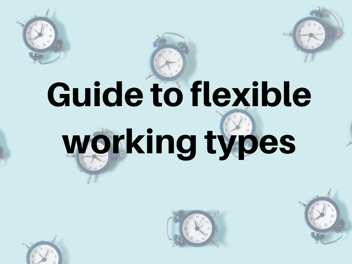10 Tips to Successful Flexible Job Design and People Selection
The adoption of flexible working within your business requires a little thought and consideration to ensure you benefit from the improved productivity and cost-effectiveness a flexible workforce has to offer.
These tips will help you on your journey to successfully implementing flexible working in your workplace:
1. Develop an accurate flexible job description
A good job description is an important building block for a successful role and successful employee. It helps you to identify what elements of the job might affect the number of days, hours and format of the flexible pattern. For example, daily operational needs may require daily presence whereas monthly or ad-hoc deadlines offers more flexibility during the week or month.
2. Define the flexible job format
What flexible working format would suit the job best? There are a variety of formats that offer flexibility to the employee and reduce costs to the employer without compromising on delivery or quality. From the classic ‘part-time week’ (such as full days Tuesday to Thursday) to reduced daily hours (such as 9am to 3pm that will work with most types of job) or even a nine-day fortnight, there is a choice of formats that will suit your requirements.
3. Estimate the volume of work
If the job already exists but the scope or workload has changed you may be able to estimate how many hours a week or month is needed for the new part-time hours. If you’re unsure, discuss it with the candidates during the interviews. Many people have some flexibility on the hours and days they can work and may be able to increase or decrease it over time. If the role is new, do the same – estimate the need and discuss it with your people if the demand changes.
4. Make sure it works for the team
How will the part-time presence of a new employee affect the productivity of the rest of the team? Discuss the flexible format and the reasons behind it with the team in advance of finding your new person. And work out chat might need to change and the characteristics you need in a new person. If the job design is integrated with the team the person will also be quickly integrated, make their induction easier and their productivity higher.
5. Don’t forget to recruit the right person for the flexible job
Competency, experience and personality are more important than the hours the candidate does. These must come first as no amount of hours will make the wrong person right for the job. Many clients find that they can access a higher level of skills and experience from the professional part-time working community so make sure you take advantage of it!
6. Choose a candidate that really wants a flexible job
The recession has driven some unemployed people to take part-time roles while they seek a full-time position (called underemployment). In some cases this can result in quick resignation as soon as they find a full-time role. Not good. There are thousands of people that only want part-time or flexible hours so ensure this is the case when you’re at interview stage by asking probing questions about their motivation – or better, screen before they get to interview.
7. Take advantage of the talent available to you
For many professionals seeking flexible work, career progression and salary can diminish in importance as suitable hours and location become more important. The combination of a rewarding job, a reasonable salary, family-friendly hours and a convenient location mean employers can attract a higher calibre of experienced people than they expected. Don’t let worries about ‘too senior’ or ‘will get bored’ get in the way.
8. Prepare for the interview
Some employers mistakenly fear that balancing family and work might affect flexible workers’ reliability – something not borne out in practice as many clients feel part-time people are more productive – but if this worries you, a well-managed interview will help you understand a candidate’s desire for the role and the strength of their capabilities, making any questions about age, children, and childcare unnecessary (never mind illegal…).
9. Get the terms and conditions right
Reduced hours contracts can affect many entitlements –such as developing pro-rata bonuses, hours, breaks and holidays – in addition to pay. Determine what benefits are associated with the flexible role before you interview or off er the job. It will make induction and early stages much easier and provide the clarity and transparency that both employers and employees require. We can help with this.
10. Agree to review future flexibility options
We often find that after the first few months of a new role, the requirements of the flexible job require slight adjustment to the days and hours worked. If this is clear from the outset and both the employee and employer recognise this possibility you can prepare for it in advance. Contract or temporary worker formats can be used if there is a high degree of uncertainty.


 Back to resources
Back to resources 4 min read
4 min read







